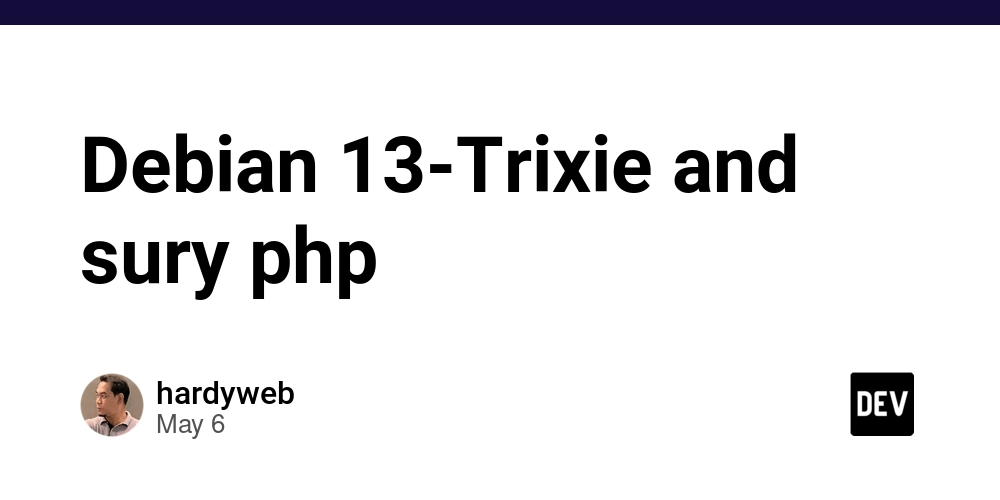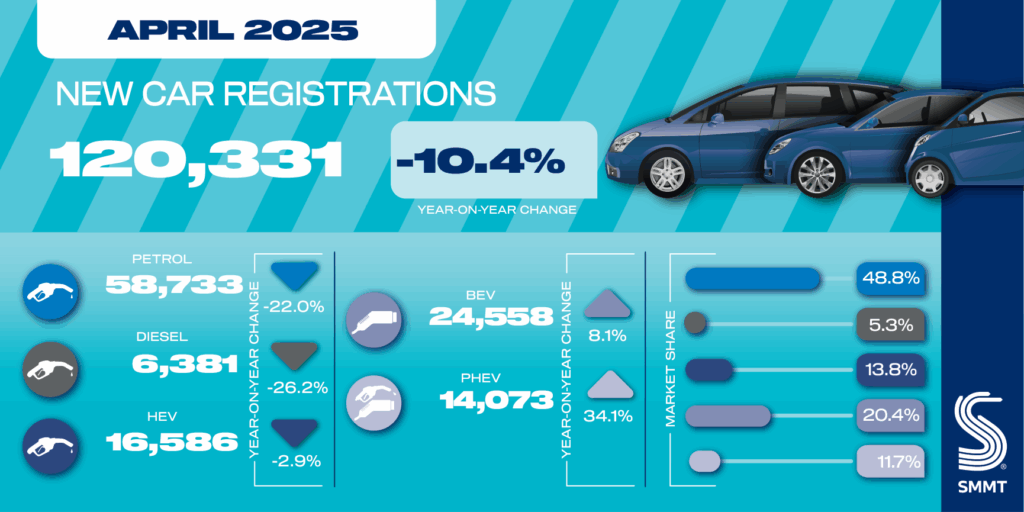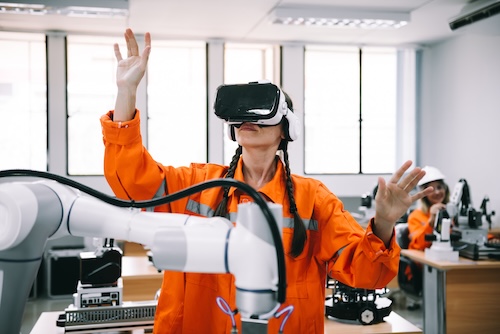Think. Know. Act. How AI’s Core Capabilities Will Shape the Future of Work
It's not just about technical depth, it’s about strategic clarity The post Think. Know. Act. How AI’s Core Capabilities Will Shape the Future of Work appeared first on Towards Data Science.

“It is not the strongest of the species that survives, nor the most intelligent, but the one most responsive to change.” – Charles Darwin, Originator of Evolutionary Theory
The disconnect often stems from a misunderstanding of what AI can and cannot do. AI isn’t a single, super intelligence. It’s a system made up of distinct capabilities. And to truly leverage AI in the enterprise, leaders need a clear way to evaluate those capabilities. In my experience, it helps to break things down into three core capabilities: the ability to Think, Know, and Act.

Think-Know-Act is a simple framework for cutting through the noise. It breaks modern AI into three essential capabilities that drive real business value:
- Think (Agent): The ability to reason, plan and make decisions autonomously. Agents break down complex goals into steps, adapt to context, and coordinate actions without constant human input.
- Know (RAG): The ability to access and apply relevant knowledge. Retrieval-Augmented Generation (RAG) enables AI to reference internal documents, databases, and external sources for accurate, context-aware responses.
- Act (MCP): The ability to execute tasks by interacting with tools, systems and workflows. Model Context Protocol (MCP) connects AI to APIs, business systems, and applications, enabling it to complete actions, not just suggest them.
When all these three capabilities come together, AI evolves from a helpful assistant into a strategic, action-oriented collaborator. It doesn’t just respond, it reasons, learns, and takes meaningful steps toward your business goals. In this article, I’ll break down each capability and explore how understanding this framework can drive smarter, more effective AI adoption across your organization.
Think: AI That Reasons and Plans (Agent Capability)

When we say an AI can think, we don’t just mean it can respond. It means that it can reason through problems and make decisions in a goal-oriented way. It can break down a problem, set a goal, and define a logical path forward. This is the core capability behind AI agents, which go far beyond simple chatbots. Unlike traditional models that react to prompts, agents can plan, prioritize, and adapt, operating more like autonomous collaborators than scripted tools.
“LLMs generate responses. Agents make decisions. They don’t just answer; they think, decide, and act.”
In a business context, a thinking AI functions like a smart analyst on your team, who doesn’t wait for step-by-step instructions, but instead takes initiative, figures out how to move from question to solution, and adapts as new information emerges.
Recent advancements have made it possible for AI agents to break down complex tasks into subtasks, use tools as needed, and iterate toward a solution. For example, imagine you ask an AI to schedule a multi-city business trip. A basic AI might ask you follow-up questions or offer a few travel suggestions. Instead of merely suggesting travel options, an Agentic Ai can plan out the entire workflow: it might autonomously check your calendar, search for flights, compare hotel prices, and then assembles a complete travel itinerary from start to finish all without needing step-by-step direction. This kind of capability is what allows AI to operate with a degree of freedom, pursuing outcomes through logical steps rather than waiting for explicit instructions to be spelled out..
For executives, the true value of thinking AI lies in efficiency and proactivity. Instead of just waiting for a prompt, say producing a report when asked, an AI agent can proactively identify a trend in your sales data, and recommend next steps before you even ask. This transforms AI from a passive tool to an active advisor. When evaluating AI solutions, ask yourself:
Does this system simply responding, or can it think through the tasks and figure things out on its own?
The more your AI can truly reason, the more complexity it can manage, and the more strategic time your team wins back.
Know: AI That Remembers and Learns (Knowledge via RAG)

The know capability is what gives AI access to relevant information that matters, especially information that is unique to your business. Even the most sophisticated reasoning engine falls short without having the right context. Traditional AI models are trained only on the data they were fed during development, which means they quickly become outdated. They can’t access your latest policy changes, pricing models, customer feedback, or market shifts unless they’re connected to your current sources of truth.
This is where Retrieval-Augmented Generation (RAG) comes in. RAG allows AI to dynamically pull information from trusted sources, including your documents, databases, and systems in real time. In other words, it gives AI models something it otherwise lacks: a dynamic working memory, a way to remember the things it was never originally trained on. Instead of relying solely on outdated training data, RAG enables AI to access and apply up-to-date, business-specific knowledge, anchoring its responses in your current business reality.
Consider a customer support assistant. Without retrieval, it might only offer generic responses that maybe helpful or maybe not, because it can’t access the customer order history or your company’s knowledge base. With RAG, that same assistant can instantly pull up the exact purchase details, check the latest return policy while it’s talking to the customer, and deliver a precise, helpful answer in real time. As McKinsey notes, RAG enables AI models to tap into an organization’s proprietary knowledge base without costly retraining, enabling outputs that are far more relevant, specific, and trustworthy.
In practice, this leads to more accurate, relevant responses, and far fewer instances of the AI saying “I don’t have that information.” This shift can significantly increase both relevance and trust.
For leaders, the takeaway is clear: if you want AI to speak to your company’s knowledge and context, and not just the internet’s, it needs a way to know. That means secure and robust access to your proprietary data, governed and structured for retrieval. An AI that understands your business, including its content, data, and decisions, will deliver far more value than one that guesses in the dark.
Act: AI That Takes Action (Execution via MCP)

The act capability is what transforms AI from an advisor into an executor. It’s the difference between an assistant that tells you what needs be done, and one that actually does it. This means triggering workflows, calling APIs, updating systems, and taking real-world actions on your behalf.
If Think is the “brain” and Know is the “memory,” then Act is the “hands” of an AI system. It’s what allows AI to complete tasks end-to-end, not just suggest what to do. It empowers AI to move beyond insights and recommendations to deliver real outcomes. It’s the final step that turns intelligence into impact.
For example, consider an AI sales assistant that not only drafts a follow-up email to a partner, but also automatically sends it once you approve the content. Or an AI operations assistant that detects an inventory shortfall and places a restock order directly through your procurement system. These aren’t futuristic scenarios, they’re capabilities already taking shape through AI integrations with enterprise systems.
We’re already seeing early examples of AI act in motion with tools like ChatGPT’s plugins, which can book meetings or retrieve live data, and MS365 Copilot, which can update spreadsheets, send emails, or adjust calendars based on natural language prompts. These emerging capabilities show how AI can move from suggesting actions to actually executing them.
To make this kind of execution scalable, the industry is now moving toward common standards to make such integrations easier and more secure. One notable innovation is Anthropic’s Model Context Protocol (mcp), often described as “a USB-C port for AI applications.” MCP provides a universal way to connect AI models to different enterprise data sources and tools, enabling them to act without the need for custom-built integrations. In short, the act capability is becoming plug-and-play: modern AI can now discover and access available tools, and use them to execute tasks, without hard-coded integrations.
For executives, the power of act lies in where automation meets tangible business value. When AI can take action, it doesn’t just save time, it reduces operational friction and accelerates outcomes. Imagine AI that not only generates and distributes reports automatically, but also escalates issues and opens support tickets without manual intervention. That said, acting AI must be deployed with strong governance in mind, including clear permissions, role-based access, and oversight to ensure security, accountability, and trust.
When evaluating AI solutions, it’s worth asking:
Does this AI system just inform, or can it also implement?
Because the ability to act on decisions is what transforms AI from a passive observer or analyst into an active team member, one that gets things done.
Bringing It All Together: Think + Know + Act
Each of these capabilities on its own can add value, but the real transformation happens when they work together. In a well-designed system, Think, Know, and Act complement each other and form a closed loop of intelligent action: AI can reason through a complex problem, retrieve the right information it needs, and execute the necessary steps, all without manual intervention.
This synergy is what shifts AI from being a reactive tool to a proactive collaborator. As one expert puts it, combining agentic reasoning with knowledge retrieval and execution turns a passive lookup model into an adaptive, intelligent problem-solving pipeline. In other words, that means AI doesn’t just chat, but truly gets things done and delivers real business outcomes.
Let’s bring this to life. Imagine a finance team using AI assistant to help manage budget variance analysis. With all three capabilities, the assistant can autonomously detect an anomaly in the quarterly spend (Think), pull in relevant accounting entries from last quarter’s baseline for comparison (Know), and then generate a summary report and email it to the CFO (Act).
Now, imagine that you take away any one of those capabilities: Without Know, the AI assistant can’t access the data it needs to diagnose the issue. Without Act, the CFO would still be waiting for someone to compile and send the report. And without Think, the AI assistant wouldn’t even realize there was an anomaly to investigate in the first place. Only when all three work together does the system deliver meaningful, autonomous value, transforming AI from a point solution into a strategic force multiplier.

Another way to think about AI is to imagine it as the sous chef in your kitchen, not the star chef, but the one who keeps everything running smoothly behind the scenes. The Know capability is like finding the perfect recipe, it retrieves the right information needed for the task. Think is adjusting that recipe based on what’s actually in your pantry and who’s coming to dinner, planning and reasoning through the situation. Act is what gets the oven preheated and the meal started, executing the steps to bring the plan to life. The goal isn’t about replacing your expertise, it’s about removing friction, accelerating execution, and scaling what already works.

When evaluating AI opportunities in your organization, it’s helpful to map them against these three dimensions. Are you exploring a solution that primarily thinks, like an AI that can autonomously optimize schedules or make decisions? Or one that mainly knows, such as a smart search engine that retrieves and surfaces relevant company data? Or perhaps one that acts, like an automation tool that automates tasks, triggers workflow or executes decisions?
The most effective AI solutions often integrate all three capabilities. But understanding which capability is missing or overly siloed can quickly explain why a promising AI initiative isn’t delivering the expected results. Use Think–Know–Act as both a diagnostic lens and strategic decision-making checklist. It brings clarity not just to technology evaluation, but to how AI can be implemented in a way that drives real business value. Just to recap, here’s a quick summary of the three core AI capabilities:

Leading in the Age of AI
Enterprise AI adoption should always start with a clear business need, not with the technology itself. The Think–Know–Act framework is a practical way to cut through the noise and focus on what truly drives impact. By understanding these core capabilities, leaders can ask the right questions:
- Does this AI solution have access to the knowledge it needs?
- Can it reason through our business challenges?
- Will it be able to take action in our environment?
When you can answer those questions with clarity and confidence, you’re not just experimenting with AI. You’re building the right architecture to deliver measurable, strategic outcomes.

We are at a point where AI can become more than just a tool. It can function as a co-worker, a creative problem-solver, an on-demand expert, and a tireless assistant all at once. But realizing that vision requires a clear strategy. The most successful companies start with a clear business outcome in mind, whether it’s improving customer service, streamlining operations, or enhancing decision-making, and then assemble the AI capabilities that deliver it.
You don’t need to be a data scientist to lead in this space. You just need to champion a capability-first mindset. Encourage your teams to design solutions that think with context, know your business, and act to deliver results.
In the age of AI, clarity is your competitive advantage. By framing AI projects or initiatives around the Think–Know–Act framework, you align AI innovation with grounded business strategy and real execution. The message for leaders is clear and empowering: With a firm grasp on these three core capabilities of modern AI, you can lead your company to innovate smarter, execute faster, and navigate the AI revolution with confidence.
AI won’t replace you. But the leaders who know how to Think, Know, and Act with it just might.
Author’s Note:
Think, Know, Act isn’t just about technical depth, it’s about strategic clarity. The leaders I admire most aren’t chasing the flashiest tools; they’re asking the right questions: What problem are we solving? What capabilities truly move the needle? As AI continues to evolve, the executives who can connect capabilities to business outcomes won’t just keep up with change, they’ll define and shape it. Read More
Read More





















































































